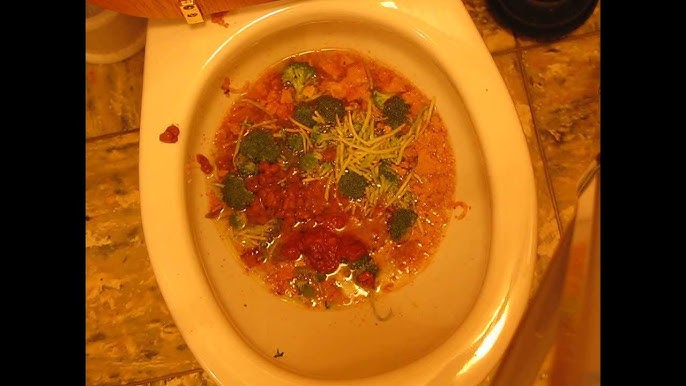Is it Feasible to Flush Food in the Toilet?
Is it Feasible to Flush Food in the Toilet?
Blog Article
The content underneath involving Flushing Food Down the Toilet? is pretty much attention-grabbing. Have a go and draw your own final thoughts.

Introduction
Many individuals are often faced with the predicament of what to do with food waste, particularly when it pertains to leftovers or scraps. One typical question that occurs is whether it's fine to purge food down the bathroom. In this post, we'll explore the reasons individuals may consider purging food, the effects of doing so, and different methods for appropriate disposal.
Reasons that individuals could take into consideration purging food
Absence of awareness
Some people may not know the possible injury brought on by flushing food down the commode. They may erroneously think that it's a safe method.
Convenience
Flushing food down the bathroom might feel like a fast and very easy service to getting rid of undesirable scraps, specifically when there's no close-by trash can available.
Idleness
In some cases, individuals might simply choose to flush food out of sheer laziness, without thinking about the consequences of their actions.
Consequences of flushing food down the commode
Environmental influence
Food waste that winds up in rivers can contribute to air pollution and injury aquatic communities. Furthermore, the water used to flush food can stress water resources.
Pipes concerns
Purging food can cause clogged pipelines and drains pipes, triggering expensive plumbing fixings and troubles.
Types of food that must not be purged
Coarse foods
Foods with coarse appearances such as celery or corn husks can get tangled in pipelines and trigger clogs.
Starchy foods
Starchy foods like pasta and rice can soak up water and swell, leading to clogs in pipes.
Oils and fats
Greasy foods like bacon or cooking oils should never be flushed down the bathroom as they can strengthen and cause obstructions.
Proper disposal approaches for food waste
Utilizing a waste disposal unit
For homes geared up with garbage disposals, food scraps can be ground up and purged via the plumbing system. Nonetheless, not all foods are suitable for disposal in this fashion.
Recycling
Certain food packaging materials can be recycled, reducing waste and lessening environmental effect.
Composting
Composting is an environment-friendly method to deal with food waste. Organic materials can be composted and utilized to enhance dirt for horticulture.
The importance of proper waste monitoring
Reducing ecological damage
Proper waste administration methods, such as composting and recycling, aid decrease air pollution and maintain natural deposits for future generations.
Protecting pipes systems
By staying clear of the practice of flushing food down the commode, home owners can prevent costly plumbing repair services and maintain the stability of their pipes systems.
Verdict
Finally, while it might be alluring to purge food down the commode for comfort, it is essential to recognize the potential repercussions of this action. By embracing appropriate waste administration methods and dealing with food waste properly, people can contribute to healthier pipes systems and a cleaner setting for all.
THINK TWICE BEFORE FLUSHING FOOD DOWN YOUR TOILET IN FALLBROOK CA
Let’s be honest, we’re really supposed to be tossing rotten or leftover food in the compost bin or trash can. But many people like to place scraps of food down the drain of, say, their kitchen sink. That’s why the garbage disposal was invented: so we can continue to place certain foods down the drain without clogging our drain in the process. Smart.
But not all of us have the luxury of having a garbage disposal installed. So, you might continue to shove food down your sink drain anyway – or worse: you might flush them down your toilet! If you’re guilty of doing the latter, you’re going to want to stop, and here’s why:
Toilet Drains Aren’t Designed to Handle Food!
There’s your answer: food just doesn’t belong in your toilet. It may seem like your toilet drain is wider than the drains of your sinks, but truth be told, that isn’t actually the case. The narrower pipes of your toilet leave your plumbing at risk for clogging if you do happen to flush your food. In addition, food doesn’t break down as quickly that toilet paper and human waste do. In turn, this leaves your toilet at risk for a nasty clog.
Although a flush of a tiny pinch of food every now and then isn’t going to completely damage your toilet, there are certain foods that should absolutely not be flushed in your toilet at all. These include starchy foods like mashed potatoes, grains, hard pieces of food that are slow to break down, and fats and oils.
The latter categories of food are particularly problematic as they may harden, expand as they absorb water, break down slowly in your system, or generally create the perfect obstruction with their gelatinous composition. These are all things you don’t want in your plumbing system!
Experiencing a Toilet Clog?
Nobody’s perfect, and we all make mistakes. Sometimes one of the mistakes people make is flushing food down their toilet and later realizing that it wasn’t the best thing to do once they see that their toilet is now clogged. Uh-oh!

Do you appreciate reading about What Can Happen If You Flush Food Down the Toilet?? Give a remark down the page. We'd be pleased to know your ideas about this review. We hope that you visit us again later on. Kindly pause to promote this blog post if you enjoyed it. I am grateful for your time. Don't forget to check our blog back soon.
Customer Reviews Report this page